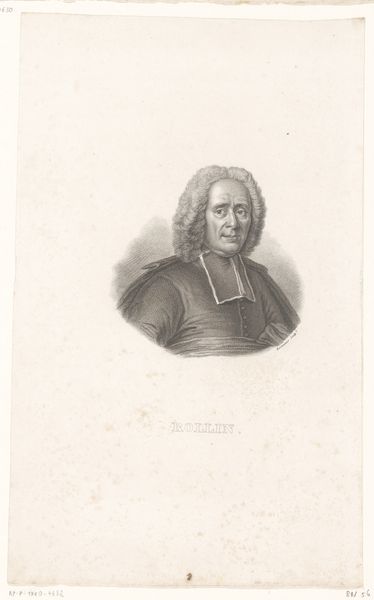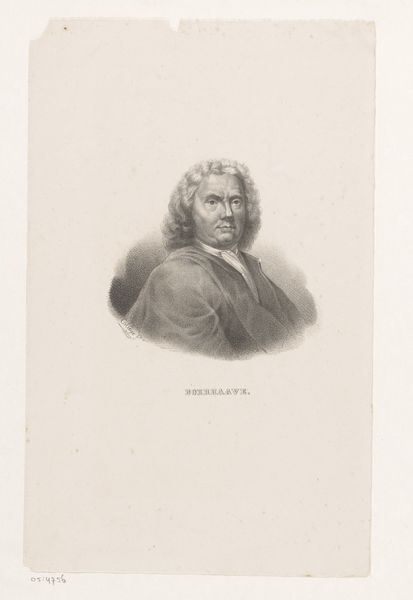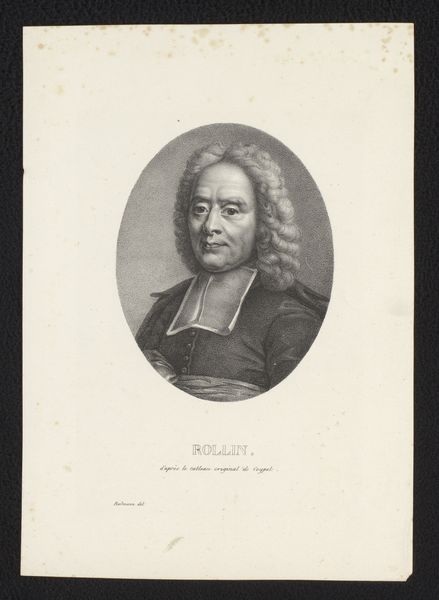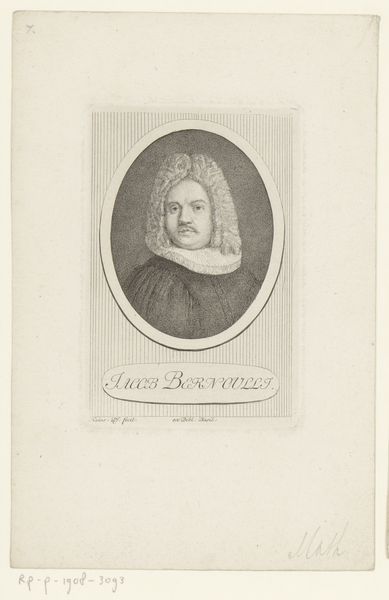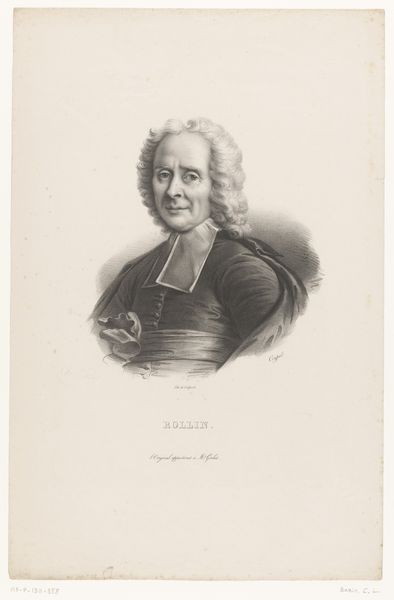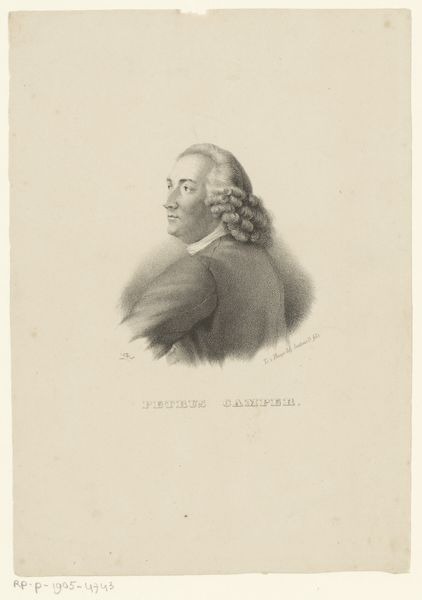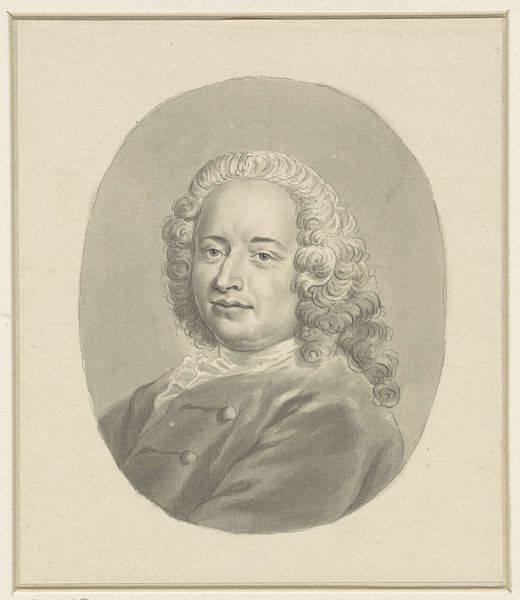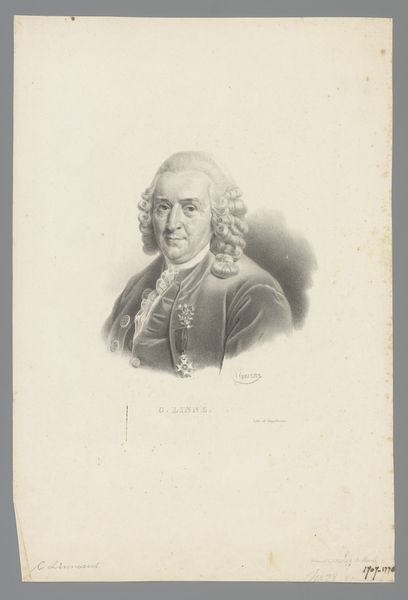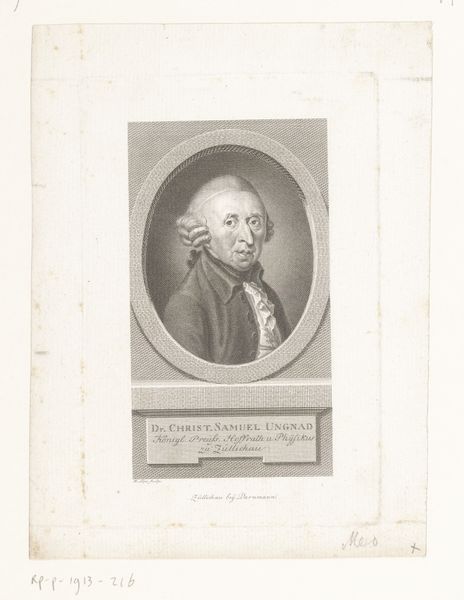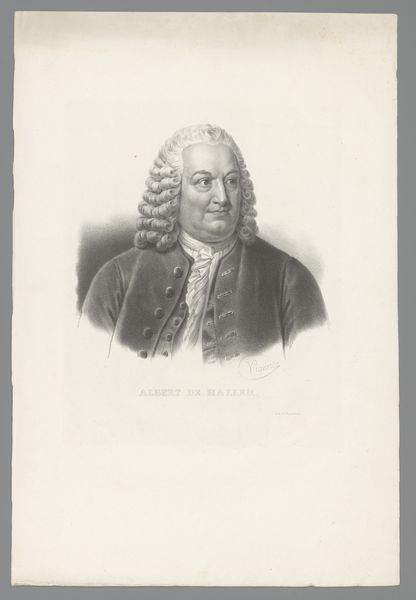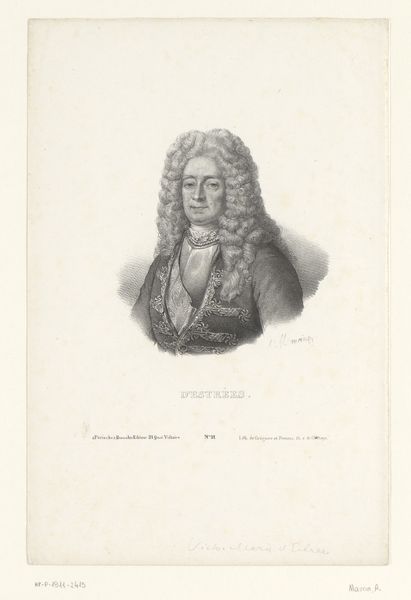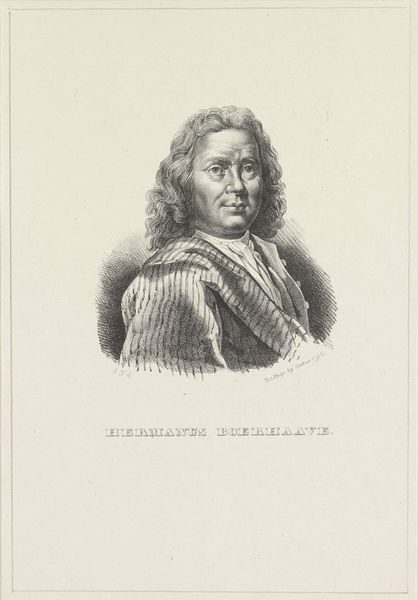
Portret van Henri François Xavier de Belsunce de Castelmoron c. 1793 - 1848
0:00
0:00
engraving
#
portrait
#
pencil drawn
#
light pencil work
#
pencil sketch
#
old engraving style
#
pencil drawing
#
line
#
pencil work
#
history-painting
#
engraving
#
realism
Dimensions: height 219 mm, width 158 mm
Copyright: Rijks Museum: Open Domain
This is François Jacques Dequevauviller's portrait of Henri François Xavier de Belsunce de Castelmoron, created using the intaglio printmaking technique. The medium is critical here: a design is incised into a metal plate, and the print is created from the ink held in these lines. Intaglio requires great skill, with tools such as burins and etching needles used to carve the image. This particular print likely involved etching, using acid to bite into the metal. Consider the labour involved in this process: the skilled hand of the engraver, the chemical processes of etching. These practices had developed for centuries, and by the 19th century were thoroughly entwined with the industrial revolution. Prints like this one allowed for the mass dissemination of images. It enabled the distribution of power and influence through visual representation. Dequevauviller’s print captures Belsunce’s likeness and circulates it widely, making it an excellent example of how reproducible media can shape public perception and solidify historical legacies. This reminds us that every artwork is also a product of its time, shaped by both skill and the means of production.
Comments
No comments
Be the first to comment and join the conversation on the ultimate creative platform.
